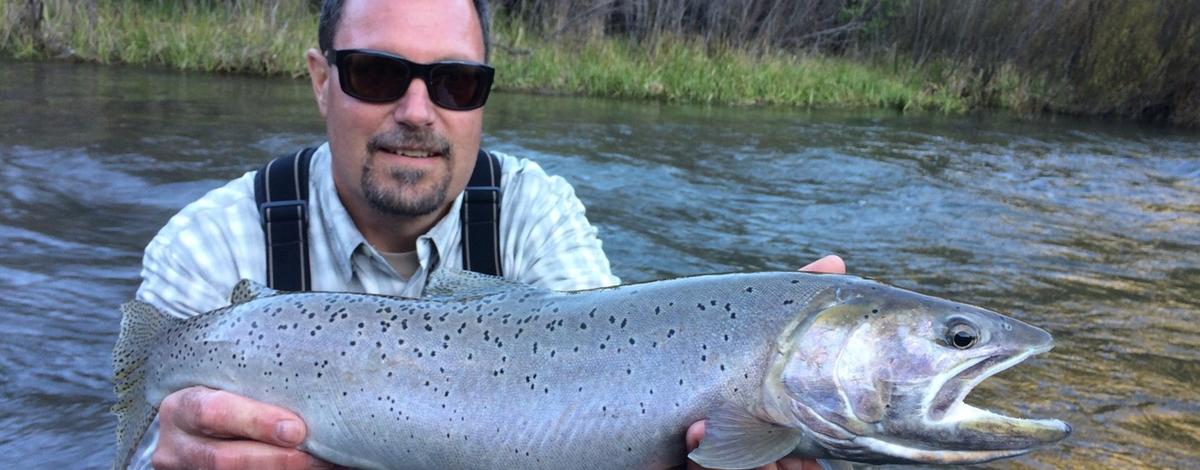Irrigation canals are found throughout Idaho’s agricultural landscape and are critical for water delivery. However, irrigation canals that take a significant amount of water from a stream have the potential to negatively impact fish-- especially when fish get an unintentional ride in the wrong direction and are removed from the river. Fish screens installed on irrigation canals help to reduce this type of fish loss (termed entrainment).
Many people may know about the large screening efforts that have been in place in the Salmon River drainage since 1958 to reduce entrainment of salmon and steelhead. (For more information about this program, including schematics and details of how fish screens work, see this blog: Providing Safe Fish Passage at Irrigation Diversions is Critical to Salmon Recovery | Idaho Fish and Game.) However, fewer people may know about the numerous screens that have been installed in the Bear River drainage in southeast Idaho since the early 2000s .
Fish screens in the Bear River drainage are used to preserve sport fishing opportunities and Bonneville cutthroat trout populations. Many different agencies and water users have been involved in installing these screens, and Idaho Department of Fish and Game personnel may be responsible for screen maintenance and repairs. Because fish screens are expensive to install and maintain, Fish and Game often collaborates with other entities to help fund these projects.
Success of a fish screen program is a collaborative working effort between water users, anglers, conservation agencies and federal and state management agencies. Water users need access to the water to irrigate their crops and pastures, and it is important that these screens work properly and don’t become a burden to the water users.
It is important to understand that not all diversions need fish screens. So how do we determine if a fish screen is necessary? Oftentimes this can be determined by the location of the diversion. If the diversion is located on the outside bend of a stream and the majority of the water is going into the diversion, entrainment rates can be higher. We also take into consideration life stages of fish and seasonal and spawning migrations that exist in the area of the diversion.
Due to the cost of fish screens and the continuous maintenance and repairs, fish biologists try to determine if entrainment occurs at a level that is negatively affecting the fish population. This is done by evaluating the number of fish that are entrained and comparing that to the abundance and trends of the fish population in the stream. If entrainment is at a level that is having a negative impact on the growth of the fish population, then it is likely beneficial to install a screen on the irrigation diversion. Fish and Game focuses on population impacts and not just the loss of a few individual fish.
Currently, there are 21 screens that are regularly maintained by Idaho Fish and Game personnel in the Bear River drainage in Idaho. However, the number of diversions in the Bear River drainage is substantial and installation of more fish screens would most likely be beneficial. Fish and Game fisheries biologists will continue to work with landowners, water users, and anglers to determine the need for additional fish screens, and routinely maintain the current fish screen infrastructure to provide continued benefits for anglers.
For more information about fish screen projects in southeast Idaho, please contact the regional Idaho Fish and Game office in Pocatello at 208-232-4703.

